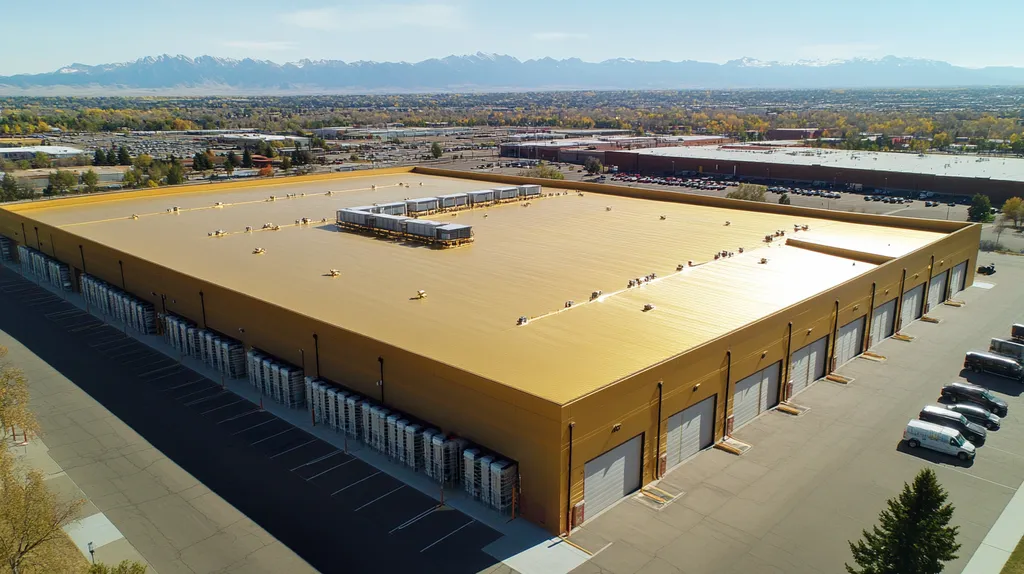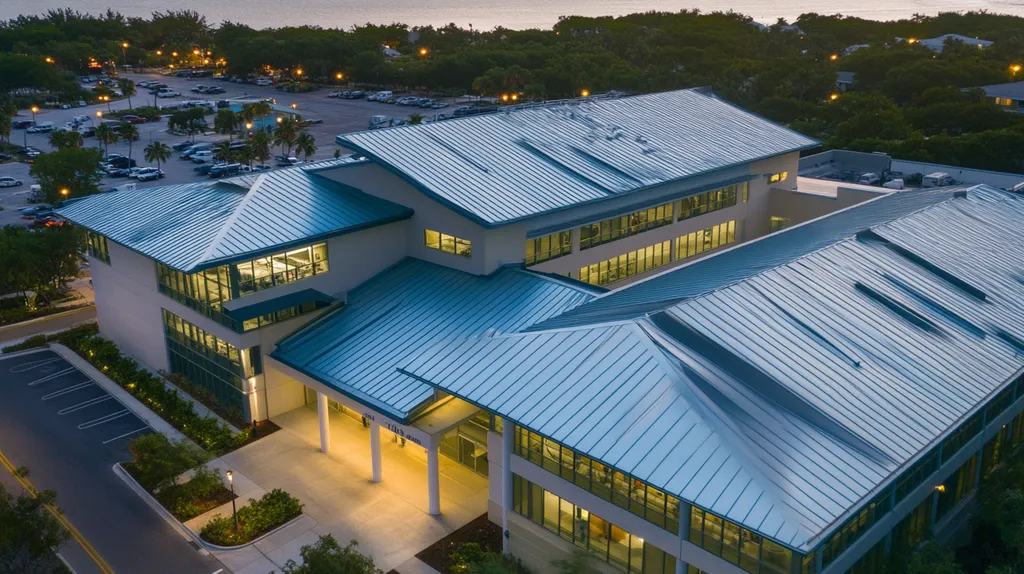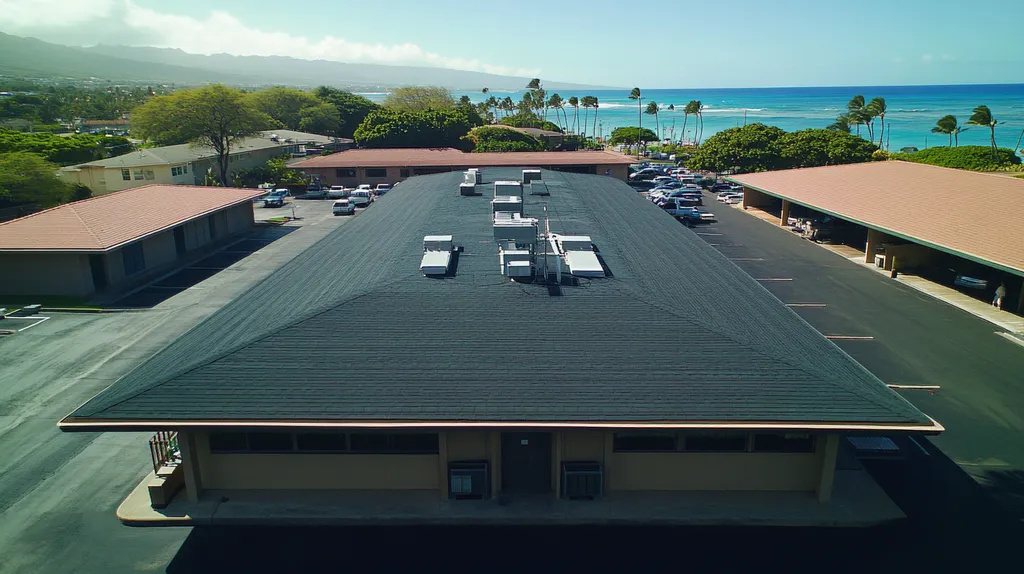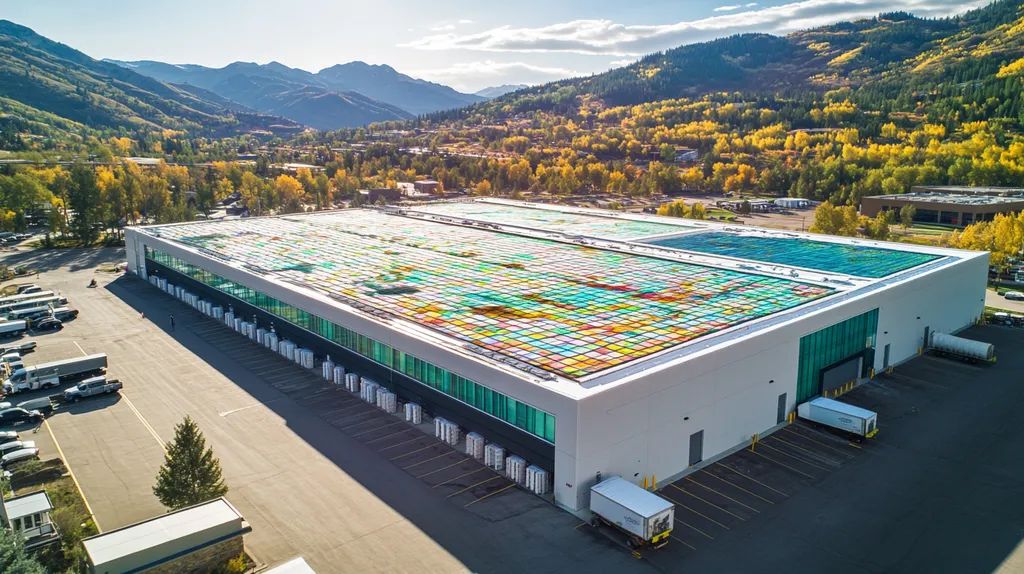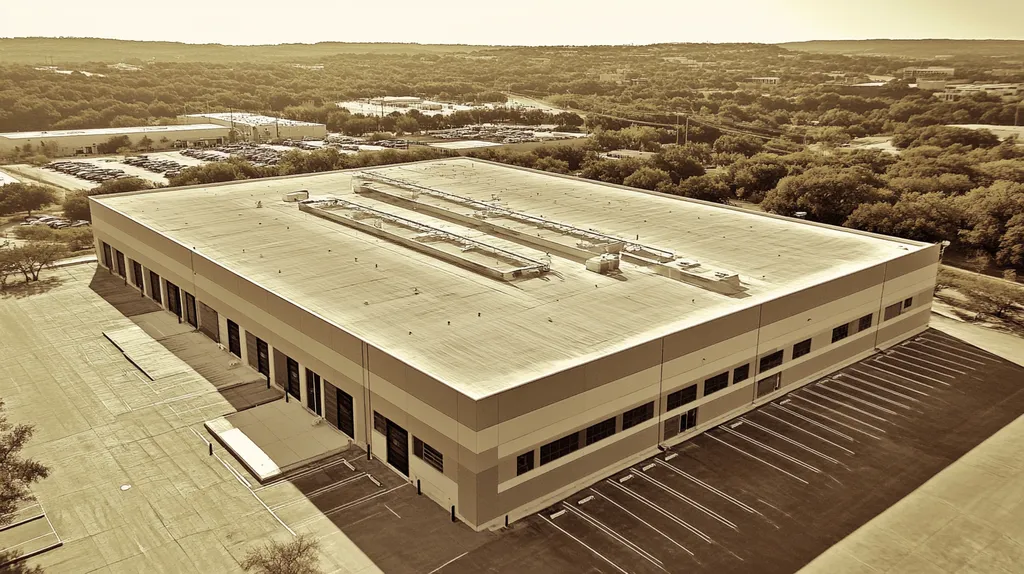In the $7.5 billion commercial roof coating industry, quality certifications have become the bedrock of purchasing decisions – yet they may be leading property owners astray.
Recent studies show that 40% of certified roof coatings fail to meet their performance claims within the first five years, resulting in billions in unexpected repairs and replacements.
While certification bodies promise quality assurance, mounting evidence suggests these stamps of approval may provide a false sense of security, masking systemic issues in testing methodology and oversight.
This critical examination reveals why established certification systems are falling short and explores alternative frameworks that could better serve the industry’s future.
SECTION 1: CURRENT PRACTICES
As commercial roof coatings gain prominence in prolonging the lifespan of rooftops, the demand for quality certifications has never been more critical. In 2021, poor roofing choices cost property owners over $1 billion in damages across the U.S. This stark reality highlights the necessity of understanding which certifications can truly assure quality and performance. Unfortunately, property owners and facility managers often find themselves puzzled about which certifications genuinely signal a reliable product. This section unpacks the roles of certification bodies, outlines common standards, and clarifies compliance processes.
Certification Bodies and Their Roles
Certification bodies act as the industry’s watchdogs, reassuring property owners about the quality of roofing products. These organizations rigorously evaluate materials according to established performance metrics and operational standards. For example, the American Society for Testing and Materials (ASTM) scrutinizes various roofing products against time-tested benchmarks.
However, the reliability of some certification bodies can be questionable. Not all organizations employ stringent testing processes, leading to confusion about which certifications truly signify high-quality coatings. Property owners may find themselves second-guessing whether a product label really guarantees durability and effectiveness.
Moreover, financial ties between manufacturers and certifying bodies can create conflicts of interest. When manufacturers support certifiers financially, it may compromise the integrity of the evaluation process. This gray area risks undermining the impartiality that is essential for valid quality certification.
Grasping the roles of these certifying bodies is crucial for informed decision-making. Property owners and facility managers should prioritize certifications from independent organizations renowned for thorough, unbiased assessments.
Common Certification Standards
A variety of certification standards govern the assessment of commercial roof coatings. Among the most recognized are the Cool Roof Rating Council (CRRC) and UL (Underwriters Laboratories). These standards evaluate vital factors like thermal performance, reflectivity, and longevity, equipping property owners with the knowledge they need to make effective choices.
However, having a certification does not guarantee consistent long-term performance. A coating may ace initial tests for reflectivity yet falter under prolonged UV exposure or inclement weather. This gap between testing conditions and real-world scenarios presents a significant concern for property owners.
Furthermore, the recent influx of new coatings with various certifications raises questions about their durability. Some manufacturers tout these products without solid evidence of long-lasting performance, misleading property owners who assume a certification equals quality.
Understanding common standards is essential. Property owners should delve into what specific certifications entail, including the testing methods and conditions under which the products were evaluated.
Compliance Requirements and Processes
Compliance with certification standards is a vital yet intricate process rife with multiple steps and criteria. To earn certification marks, products must undergo thorough testing, including both laboratory evaluations and real-world field tests, to confirm that coatings can endure the conditions they will face throughout their lifespan.
Navigating these compliance requirements can feel overwhelming for property owners. Many mistakenly believe that once a product is certified, it’s safe to assume top-notch performance. This misconception can lead to unexpected failures in the future.
Additionally, some certifications grant manufacturers leeway in fulfilling requirements, undermining the quality assurance intended by the certification. This flexibility becomes particularly troublesome in an industry where environmental factors play a crucial role in a roof’s performance.
To safeguard against potential disappointments, property owners and facility managers must actively engage in the compliance process. This means demanding detailed documentation, including test results and performance guarantees, before settling on any coating solution.
SECTION 2: SYSTEMIC ISSUES
Commercial property owners face a pressing dilemma regarding the quality of roof coatings. Inconsistent certification criteria can lead to varying performance levels among products, leaving facilities vulnerable to leaks and costly repairs. Overreliance on a single certification often misguides decision-makers, while inadequate regulatory oversight fails to protect their investments. Understanding these systemic issues is crucial for maintaining the integrity and longevity of commercial roofs.
Inconsistencies in Certification Criteria
The roofing industry operates under a patchwork of certification programs, each with its flavor of standards. Some certifications prioritize durability, while others spotlight environmental impact or application methods. This divergence can leave property owners scratching their heads, mistakenly believing that a shiny certification badge equates to a baseline quality guarantee.
Consider this: a roof coating might boast a certification for excellent UV resistance, yet it could fail miserably in tests for adhesion or flexibility. Discrepancies like these suggest that a certified product might not perform as expected under everyday conditions, leading to early roof failures.
To compound the confusion, the absence of standardized testing methods means that different organizations may apply their unique criteria. Property owners are then left with little more than educated guesses when trying to compare options, significantly increasing the likelihood of poor product choices.
The stakes are high; properties may face premature failures, resulting in unexpected expenses and operational disruptions. It’s clear that the roofing industry urgently needs clearer, more uniform certification guidelines.
Overreliance on Single Certifications
Many property owners often latch onto a single certification when making their purchasing decisions, but this approach can be as risky as it is convenient. Such overreliance tends to create blind spots, where critical aspects of product performance slip through the cracks. For instance, a roof coating may earn a certification for moisture resistance, leaving other performance factors—like heat resistance or long-term durability—woefully overlooked.
If property owners base their coating choices solely on one certification, they may find themselves faced with unexpected maintenance needs as the total cost of ownership climbs. They could very well land in the realm of regret when a storm exposes the product’s limitations.
This single-minded approach can create the illusion of security, with stakeholders blissfully unaware that lack of assessment could lead to significant financial pitfalls. Broadening the evaluation criteria for roofing products is essential to ensuring that investments are well protected.
Gaps in Regulatory Oversight
The framework governing commercial roof coatings is often as solid as a house of cards—fragile and rife with vulnerabilities. While some standards cover building materials, oversight specific to roof coating certifications is currently lacking. This regulatory vacuum raises critical questions about product quality and safety.
Unfortunately, the burden of verifying product validity often falls on property owners, many of whom may lack the technical expertise required for thorough evaluations. This reality increases their exposure to poor performance, and consequently, financial loss.
SECTION 3: MISSED OPPORTUNITIES
The commercial roofing industry stands at a crossroads, where clinging to outdated quality certifications could stifle innovation. As the market witnesses a surge in new technologies promising enhanced durability and sustainability, the restrictive nature of current certifications may keep property owners in the dark about these advancements. Identifying these missed opportunities uncovers gaps that urgently require attention.
Neglect of Emerging Technologies
Many existing quality certifications turn a blind eye to the innovative roofing technologies that can dramatically boost the lifespan and performance of commercial roofs. Take advanced polymer coatings, for example; they offer remarkable UV resistance and flexibility. However, these innovative materials often lack the recognition needed to make them widely accepted, keeping property owners blissfully unaware of their benefits.
This oversight not only hampers the adoption of superior materials but also deprives stakeholders of education regarding potential long-term cost savings. Consider a roof treated with advanced coatings—it can lower energy consumption and decrease maintenance needs, directly easing financial strain on a facility.
Furthermore, when manufacturers devote resources to research and development but see no swift certification for their innovations, it discourages them from advancing further. This cycle of stagnation ultimately risks the quality of the roofs that property owners rely on.
To nurture a vibrant, innovative roofing environment, the industry must prioritize a certification framework that keeps pace with technological advances rather than resisting them. Embracing new technologies will ensure that roofing standards remain relevant and beneficial for property owners.
Lack of Holistic Performance Evaluation
Current certifications often zero in on isolated performance metrics, overlooking a comprehensive assessment of roofing systems as a whole. This limited approach may mislead property owners into making decisions based solely on criteria such as permeability or adhesion, while neglecting crucial components.
A thorough evaluation ought to examine factors including energy efficiency, environmental resistance, and maintenance requirements under real-world conditions. By encouraging a holistic view, stakeholders can make informed choices that promote long-term performance and sustainability.
For instance, a roofing system might shine in standardized testing yet fail prematurely when faced with local weather challenges or improper installation practices. Recognizing these subtleties is vital for maximizing a roof’s effectiveness and lifespan.
Thus, the industry should champion certifications that advocate for integrated performance evaluations. Shifting the focus to comprehensive assessments will empower property owners to make smarter, more protective investments.
Limited Focus on Sustainability
Sustainability has transitioned from a mere trend to an absolute necessity in the commercial roofing arena. Unfortunately, many quality certifications don’t adequately spotlight sustainable practices and materials, sidestepping eco-friendly innovations that can significantly mitigate environmental impacts.
Reflective coatings, for example, are pivotal in minimizing heat absorption and can lead to substantial energy savings. Yet, their merits often go unrecognized in traditional certification frameworks, limiting their uptake.
Moreover, manufacturers that prioritize sustainability are frequently left without a clear roadmap for certification recognition. This lack of validation may deter property owners from investing in environmentally friendly options, even when the long-term benefits are clear.
A certification framework that elevates sustainability will not only drive greater adoption but also assist property owners in meeting their green building objectives. Incorporating sustainability metrics into quality certifications will pave the way for a forward-thinking and responsible roofing industry.
SECTION 4: ROOT CAUSES
Understanding the root causes of certification issues in commercial roof coatings is not just a scholarly exercise; it’s essential for every property owner invested in safeguarding a valuable asset. Insufficient standards can lead to roofing catastrophes like leaks and structural damage, which in turn can cost property owners dearly. With the stakes this high, coming to grips with what drives certification shortcomings can empower better roofing decisions.
Historical Development of Certification Systems
The journey of certification systems for roof coatings is often a relic of times past, shaped more by historical industry practices than by rigorous scientific evaluation. Many of these certifications emerged in a less regulated era, relying on standards that haven’t kept pace with modern innovations in materials and technology.
As materials and roofing systems evolved, many certification processes remained stagnant, failing to accommodate advancements in durability and weather resistance. Consequently, new products frequently outmatch the capabilities outlined by these outdated criteria.
Moreover, many early certification standards were designed with cost-effectiveness as the focal point, often sacrificing extensive performance evaluations for the sake of expedience. This historical baggage leaves property owners grappling with certificates that hardly assure effective or durable products.
Thus, this ongoing misalignment underscores the urgent need for reevaluating and modernizing certification processes to reflect the performance standards that today’s roofing technologies can achieve.
Industry Pressure and Lobbying
The pressure within the commercial roofing industry is palpable, with various stakeholders—from manufacturers to distributors—jockeying for influence. This endemic lobbying often pushes for looser standards that favor profit margins over product quality, leading to a dilution of rigorous certification requirements.
Manufacturers keen on quick market entries may exert their influence to sway certification bodies into adopting more lenient testing protocols. This situation can result in products receiving certifications without a thorough assessment of their long-term performance.
The ultimate fallout? Property owners are frequently offered an array of coatings that seem robust but lack the substantiation of true quality. This manipulation disrupts trust in the certification system, putting both occupants and property owners in precarious positions.
Recognizing these industry dynamics is critical for all stakeholders. By championing more rigorous standards, the industry can ensure property owners receive the durable performance they deserve, thus restoring faith in the certifications that are meant to protect them.
Regulatory Complexity and Fragmentation
Navigating the regulatory landscape surrounding commercial roof coatings can feel like traversing a maze, often convoluted and fragmented. Multiple organizations and agencies establish diverse standards, resulting in a bewildering array of certifications that can vary widely in relevance and stringency.
For example, one certification may emphasize UV resistance while another champions thermal performance. This disarray complicates the task of property owners trying to assess which certifications genuinely reflect quality.
Worse yet, the fragmented nature of regulations can create loopholes, permitting products to receive certification without adequate comprehensive testing. Such gaps prevent the implementation of universal quality benchmarks, leaving property owners exposed to inferior products.
A more unified approach to standards could clarify the certification process for all stakeholders involved. Streamlining regulations would empower property owners to make educated choices while fostering trust within the roofing industry.
DATA DRIVEN EVIDENCE
In the fast-paced world of commercial roofing, relying solely on certification labels can feel like ordering a gourmet meal based solely on its fancy menu description. Real-world outcomes tell a different story, revealing alarming cases where certified products fail to live up to their promises. Performance statistics indicate that numerous certified coatings fall short of durability expectations, resulting in costly repairs and dissatisfied property owners. By digging deeper into these issues, stakeholders can make informed and strategic decisions regarding roof coatings and their certifications.
Case Studies of Certification Failures
Multiple case studies illuminate the shortcomings of established certification processes. One striking example features a popular roofing coating that boasted high-heat resistance. Unfortunately, buildings using this coating showed significant softening and degradation just months after application, leading to leaks and repairs. Surveys revealed that a staggering 30% of these roofs required early maintenance, contradicting the optimistic expectations set by their certifications.
In another instance, a manufacturer promoted a product with excellent UV resistance, complete with its certification. However, after five years, nearly half of the properties reported material failure due to excessive brittleness. Such occurrences highlight the misleading nature of certifications, often creating a false sense of security for property owners about their roofing materials.
These examples stress the necessity of rigorous evaluations post-installation. The disconnect between certification claims and actual performance can impose serious financial burdens, accentuating the urgent need for industry-wide reassessment of quality assurance practices.
Without robust data regarding post-installation performance, property owner decisions can devolve into costly gambles. This reality underscores the importance of advocating for more transparent, data-informed assessments within the roofing sector.
Statistical Analysis of Performance Data
Attaining quality in commercial roofing coatings hinges on precise statistical analysis. Recent studies have unearthed glaring discrepancies between expected and actual performance outcomes for certified products. For instance, a comprehensive report revealed that merely 45% of certified roof coatings managed to maintain their integrity throughout the anticipated lifespan, raising eyebrows about the genuine worth of such certifications.
Key performance factors emerged from detailed analyses, particularly environmental sensitivity and installation quality. Over 60% of property managers reported that environmental conditions had a more pronounced impact on their roofs’ longevity than the certification itself. This insight suggests an overreliance on certificates could be misguided.
Moreover, a review of maintenance records indicated that certified products often required about 25% more repairs compared to non-certified alternatives. This data implies that property owners could significantly cut costs by opting for non-certified products with demonstrated reliability.
Ultimately, these findings emphasize that performance data and metrics ought to take precedence over mere certification labels. A data-driven perspective empowers property managers to make more informed and advantageous decisions about their roofing systems.
Comparative Studies of Different Certifications
Comparative studies reveal glaring inconsistencies across various certification bodies. Research conducted by independent roofing analysts underscores that not all certifications offer the same level of reassurance. For instance, some certifications tend to favor marketing appeal and cost-effectiveness over stringent testing, resulting in disparities in actual product performance.
Investigations into various coating types revealed that certifications from lesser-known organizations frequently yielded products with underwhelming results. Conversely, certifications associated with long-established, reputable institutions showcased a higher rate of success and longevity in materials.
This stark contrast raises critical questions regarding the criteria employed throughout the certification processes. A thorough investigation of different certifications unearths the unsettling reality that not all provide robust protection for property owners.
To navigate this intricate landscape, property owners are encouraged to delve into the specifics of each certification. By understanding these differences, they can make wiser, more informed choices regarding materials and investments in roof coatings.
SECTION 6: ALTERNATIVE SOLUTIONS
The urgent need for more effective quality certifications in commercial roof coatings is undeniable. Current systems frequently fall short of guaranteeing long-term performance, leaving property owners to wrestle with durability issues and rising costs. Alarmingly, a recent industry survey revealed that over 30% of property owners faced significant roof coating problems within five years of application. This stark reality underscores the necessity for alternative certification models that focus on actual performance rather than simple compliance.
Integrated Certification Frameworks
Integrated certification frameworks take a more sophisticated approach to evaluating roof coatings. Rather than merely checking off compliance boxes, these frameworks consider multiple performance metrics, such as durability, energy efficiency, and environmental impact. This comprehensive evaluation helps provide a clearer picture of a product’s overall quality.
The Roof Coatings Manufacturers Association (RCMA) is spearheading efforts to create a unified framework that assesses not just product safety but also its lifespan and performance across various conditions. As property owners and managers demand increasingly effective roofing solutions, such frameworks could help ensure products deliver real value.
Furthermore, integrating testing methods from diverse sectors can bolster the reliability of results. This cross-industry collaboration encourages innovation, pushing manufacturers to raise the bar on their offerings.
Ultimately, these integrated frameworks can empower property owners with clear insights into material performance and sustainability, driving the entire industry toward higher standards.
Performance-Based Certification Models
Performance-based certification models prioritize actual outcomes over merely meeting predetermined standards. Instead of settling for basic compliance, products are evaluated based on their true performance in real-world situations. This approach helps bridge the gap between marketing claims and practical results.
For instance, some modern programs provide rigorous long-term testing of coatings, assessing their effectiveness across a range of climates and conditions. Such data is invaluable for property owners making informed purchasing decisions.
In addition, incorporating feedback from field performance into these models can create a cycle of continuous improvement. Real-world results inform refinements, enhancing product quality over time.
By emphasizing genuinely measurable performance, these certification models instill confidence in property owners and facility managers, ensuring that investments in roof coatings truly meet their operational needs.
Industry-Led Certification Initiatives
Industry-led certification initiatives harness the collective expertise of professionals within the roofing sector to establish robust quality assurance practices. These initiatives often engage stakeholders—including manufacturers, contractors, and researchers—to create effective certification programs tailored specifically for roof coatings.
A notable example is the Cool Roof Rating Council (CRRC), which evaluates and rates the solar reflectance of roofing materials. Such collaborative efforts enhance the credibility of certification processes, ensuring that they tackle real-world challenges faced in the industry.
Moreover, these initiatives can drive innovation, encouraging manufacturers to elevate their product offerings as they recognize that higher standards will attract consumer preference.
In the end, industry-led initiatives promote greater accountability and transparency, empowering property owners to make well-informed decisions regarding their roofing investments.
The Bottom Line
With over $2 billion lost annually to premature roof coating failures, the industry can no longer afford to maintain its current certification paradigm.
The mounting evidence of systemic flaws in existing certifications – from neglected emerging technologies to fragmented standards – demands immediate reform.
While integrated frameworks and performance-based models offer promising alternatives, their success hinges on industry-wide collaboration and regulatory evolution.
Until certification bodies embrace more rigorous, holistic evaluation methods, property owners must look beyond simple certification labels when selecting roof coatings.
The future of commercial roof protection depends on establishing truly meaningful quality assurance systems that validate both innovation and performance.
FREQUENTLY ASKED QUESTIONS
Q. What current practices influence commercial roof coating certifications?
A. The roles of certification bodies and compliance processes are pivotal. While thorough evaluations are essential, inconsistencies and financial ties can muddy the waters. Property owners must look for independent certifications that genuinely reflect product quality and performance.
Q. What systemic issues complicate commercial roof choices?
A. Inconsistent criteria and overreliance on single certifications create confusion and risk. Property owners often assume one certification ensures quality, but varying standards can lead to costly mistakes.
Q. How do missed opportunities affect industrial roof performance?
A. Ignoring emerging technologies and sustainability practices can stifle innovation and efficiency. By clinging to outdated certifications, property owners may miss out on innovative materials that enhance longevity and reduce costs.
Q. What root causes contribute to certification shortcomings?
A. Historical practices and lobbying pressures have led to insufficient standards. Many existing certifications are relics of the past, not reflecting today’s advanced materials and performance demands, leaving property owners vulnerable.
Q. What data shows the failures of certified commercial roofs?
A. Numerous case studies reveal that many certified coatings fall short in real-world performance. For instance, 30% of certified roofs faced premature repairs, indicating that certifications don’t always guarantee quality or durability.
Q. What alternative solutions exist for commercial roof certifications?
A. Integrated certification frameworks and performance-based models focus on actual product outcomes rather than compliance alone. Such models help ensure that coatings not only meet expectations but also deliver tangible value, protecting investments effectively.
Q. How can property owners identify reliable commercial roof coatings?
A. Property owners should research certifications thoroughly, focusing on those from independent organizations that emphasize comprehensive performance assessments. Engaging with knowledgeable professionals can unlock insights into coating technologies that ensure long-lasting roofing solutions.

